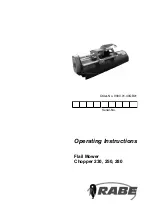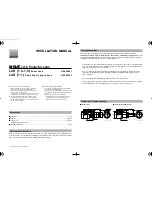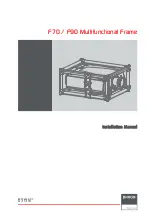
IA-32 Intel® Architecture Optimization
4-24
Absolute Difference of Signed Numbers
Chapter 4 computes the absolute difference of two signed numbers.
The technique used here is to first sort the corresponding elements of the
input operands into packed words of the maximum values, and packed
words of the minimum values. Then the minimum values are subtracted
from the maximum values to generate the required absolute difference.
The key is a fast sorting technique that uses the fact that
B = xor(A,
xor
(A,B))
and
A = xor(A,0)
. Thus in a packed data type, having
some elements being
xor(A,B)
and some being 0, you could
xor
such
an operand with
A
and receive in some places values of
A
and in some
values of
B
. The following examples assume a packed-word data type,
each element being a signed value.
NOTE.
There is no MMX™ technology subtract
instruction that receives
SIGNED
operands and
subtracts them with
UNSIGNED
saturation.
Example 4-17 Absolute Difference of Signed Numbers
;Input:
;
MM0 signed source operand
;
MM1 signed source operand
;Output:
;
MM0 absolute difference of the unsigned
;
operands
continued
Summary of Contents for ARCHITECTURE IA-32
Page 1: ...IA 32 Intel Architecture Optimization Reference Manual Order Number 248966 013US April 2006...
Page 220: ...IA 32 Intel Architecture Optimization 3 40...
Page 434: ...IA 32 Intel Architecture Optimization 9 20...
Page 514: ...IA 32 Intel Architecture Optimization B 60...
Page 536: ...IA 32 Intel Architecture Optimization C 22...
















































